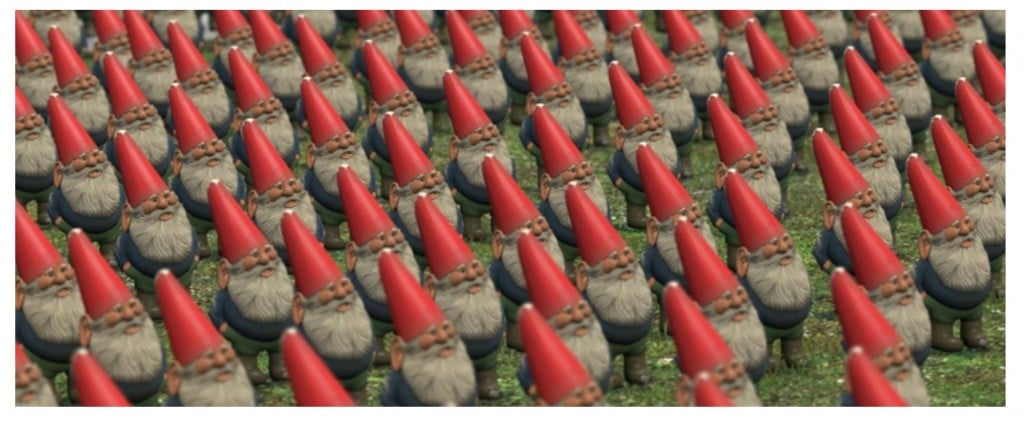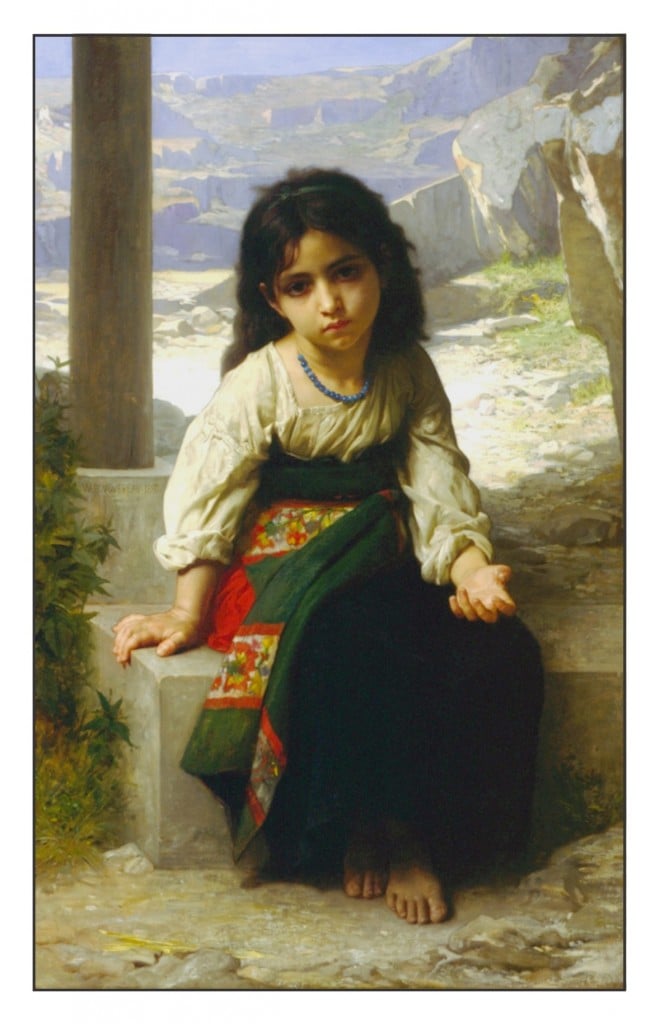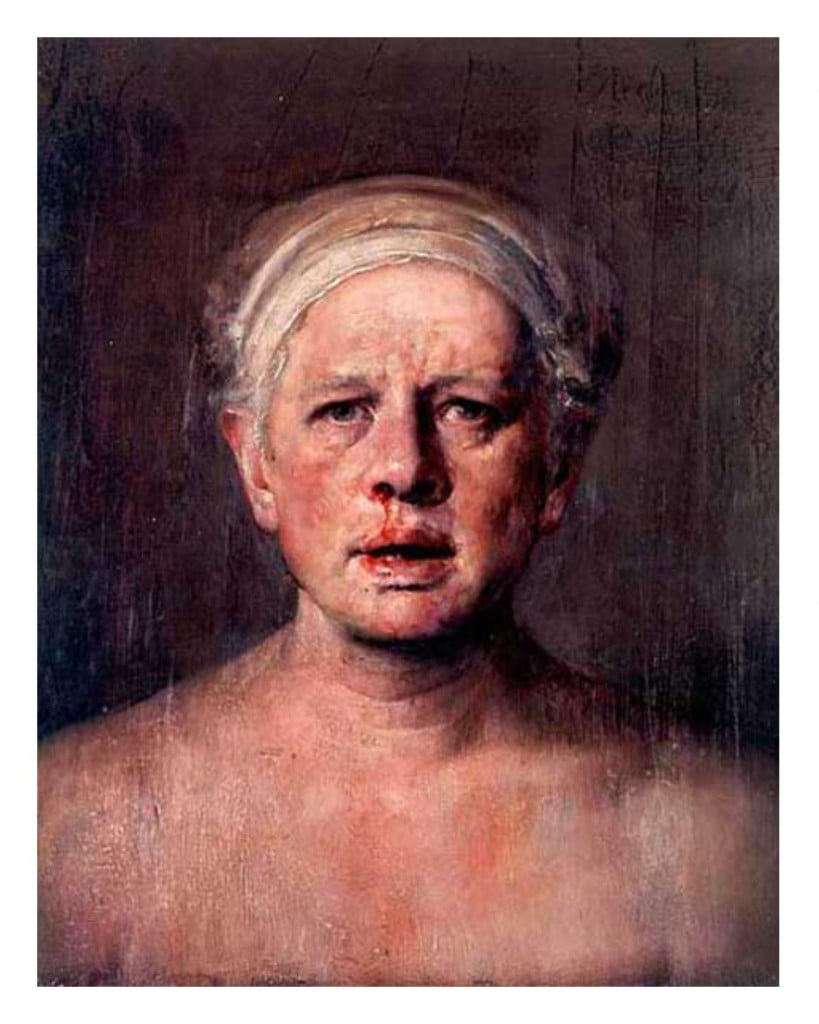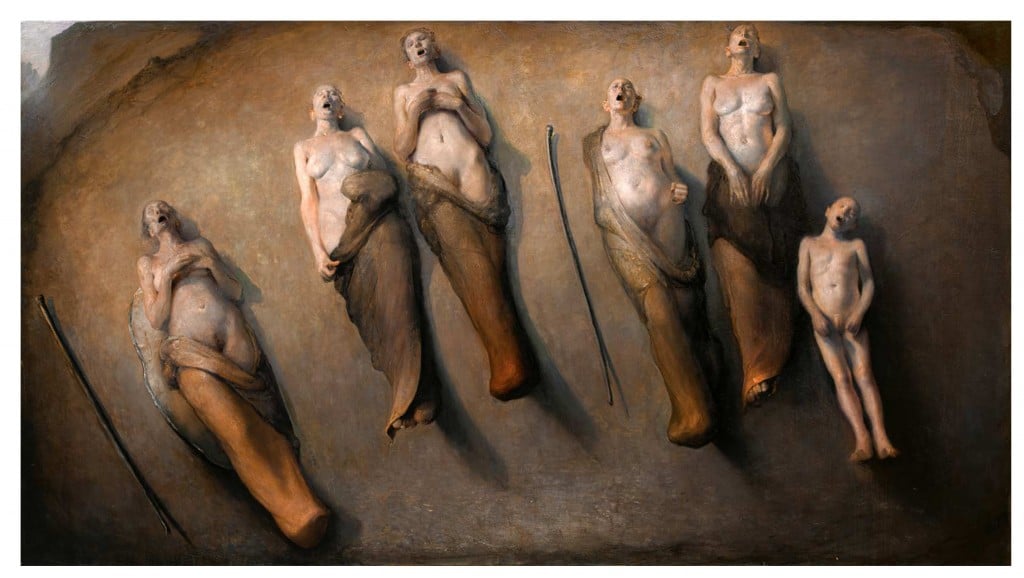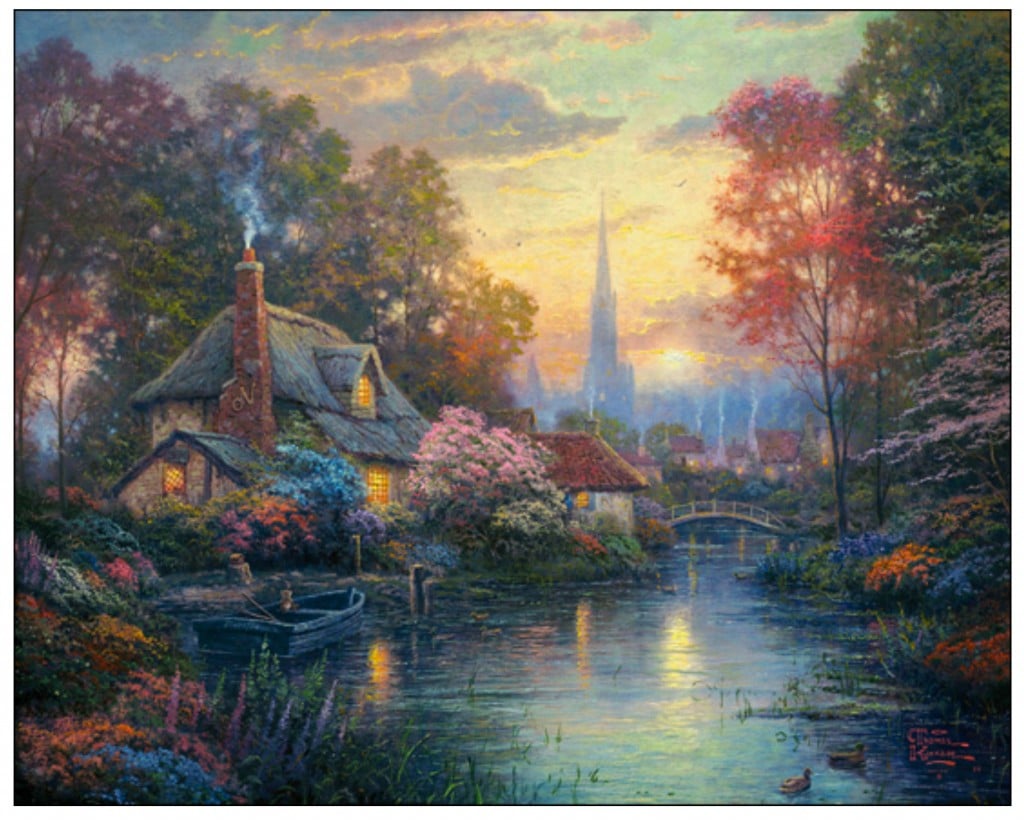Kitsch
The term “kitsch” came into being in Germany toward the end of the nineteenth century (Dorfles, 1969; Calinescu, 1987; Riout, 2004). The etiology of the word is unknown. One possible source is the verb kitschen meaning “to collect rubbish” (Rugg, 2002); another is verkitschen, “to make cheaply” (Dutton, 1998). Words used to describe kitsch – “tacky,” “tawdry,” “garish,” “chintzy,” “schmaltzy” and “cheesy” – suggest cheapness, ostentation, triteness and sentimentality. Garden gnomes are a classic example.
Kitsch is bad art. However, the judgment of whether something is kitsch or not is highly subjective. Everyone has a personal idea of what is beautiful. In the words of David Hume
Beauty is no quality in things themselves: It exists merely in the mind which contemplates them; and each mind perceives a different beauty. One person may even perceive deformity, where another is sensible of beauty; and every individual ought to acquiesce in his own sentiment, without pretending to regulate those of others. (Hume, 1757, section 7).
Nevertheless, Hume goes on to state that most people would agree to some general principles of beauty:
It appears then, that, amidst all the variety and caprice of taste, there are certain general principles of approbation or blame, whose influence a careful eye may trace in all operations of the mind. Some particular forms or qualities, from the original structure of the internal fabric, are calculated to please, and others to displease (section 12).
Experience and education allow one to understand and apply these principles. Thus we develop good taste. Kitsch is the art of bad taste.
The Rise of Kitsch
Kitsch is a phenomenon of the modern age. There has always been bad art, but this never became popular or widespread. In the past, bad art did not sell. Much of kitsch’s success in modern times derives from a commercial system that encourages its production and consumption. Kitsch is the art of the consumer society.
A major factor leading to kitsch was thus the rise of the bourgeoisie (Moles, 1971; Calinescu, 1987). In the nineteenth century the middle class expanded greatly. The upper middle class wanted to buy things of beauty, but they had not the education to do so with good taste. The lower middle class became able to purchase things beyond the bare necessities, but they were unable to pay for original art and settled for imitations. Industry quickly provided these and consumer kitsch was born.
The industrial revolution gave workers leisure time. So as not to be bored during this free time, people sought activities that were pleasing without requiring effort: entertainment rather than true art. Pleasurable relaxation was the goal of most of society; kitsch was the easiest means to this end. Abraham Moles (1971) considered kitsch to be l’art de bonheur the “art of happiness.”
One might therefore consider kitsch as the art of the people. The following is from Abraham Moles (1971, p. 28, the French is elegant and my translation necessarily inexact:
Le Kitsch est à ce titre essentiellement démocratique : il est l’art acceptable, ce qui ne choque pas notre esprit par une transcendence hors de la vie quotidienne, par un effort qui nous dépasse – surtout s’il doit nous faire dépasser nous-même. Le Kitsch est à la mesure de l’homme, quand l’art en est la démesure, le Kitsch dilue l’originalité à un degré suffisant pour la faire accepter par tous. [Kitsch is in this way essentially democratic: it is acceptable art, art which does not shock us to transcend everyday life, or require any extraordinary effort – especially any surpassing of our present selves. Kitsch stays within our easy reach, whereas art exceeds our grasp; kitsch dilutes originality enough to make it accessible to all.]
However, we cannot lay all the blame on the middle class. Aristocrats have often succumbed to ostentatious displays of wealth that would be generally considered kitsch. The “rich kitsch” of fake ruins and ceiling putti is every bit as bad as the poor kitsch of garden gnomes and fuzzy dice. Furthermore, the merchant class has sometimes displayed excellent taste. Patrons of fine art have come from wealthy members of the middle class as much as from the aristocracy.
Dwight Macdonald considered kitsch as essentially the same as the “mass culture” used to exploit the masses. He distinguished it from folk art which is created spontaneously by the people, and from high culture which is created for the elite:
Mass Culture is imposed from above. It is fabricated by technicians hired by businessmen; its audiences are passive consumers, their participation limited to the choice between buying and not buying. The Lords of kitsch, in short, exploit the cultural needs of the masses in order to make a profit and/or to maintain their class rule – in Communist countries, only the second purpose obtains. (Macdonald, 1953, p. 2-3)
Macdonald painted a pessimistic picture of our artistic future:
The Lords of kitsch sell culture to the masses. It is a debased, trivial culture that voids both the deep realities (sex, death, failure, tragedy) and also the simple, spontaneous pleasures, since the realities would be too real and the pleasures too lively to induce what Mr. Seldes calls ‘the mood of consent’: i.e., a narcotised acceptance of Mass Culture and of the commodities it sells as a substitute for the unsettling and unpredictable (hence unsalable) joy, tragedy, wit, change, originality and beauty of real life. The masses, debauched by several generations of this sort of thing, in turn come to demand trivial and comfortable cultural products. (Macdonald, 1953, p. 16, the reference to Seldes is to his 1950 book The Great Audience.)
However, I am not sure that we can always fault the taste of the masses. Popular culture can promote kitsch, but it can also make significant artistic contributions. Shakespeare was notoriously beloved of the masses. Furthermore, he gave the penny public what it wanted.
Macdonald considered as kitsch everything produced by the entertainment industry – radio, television, movies, and comics. Much is but not all. Some works in these modern art forms are both beautiful and significant.
Reproduction
A second factor in the development of kitsch was the development of techniques for reproduction. Multiple copies of an image could be cheaply produced and widely marketed (Benjamin, 1936; Dorfles, 1969; Moles, 1971). Reproductions lack the aura (and the value) of the originals. And when used for purposes other than those of the artist, they might be considered kitsch: Renoir images on biscuit tins, Pollock paintings on silken scarves, Rodin sculptures as bookends.
And yet, and yet. Art has always been reproduced. Engravings of pictures and casts of statues allowed the dissemination of artistic creations. How else can art history be taught or learned? Reproduction is not wrong. It is not forgery. However, reproductions may sometimes be disconcertingly different from the original. The deceptive quality of kitsch may lie “in its claim to supply its consumers with essentially the same kinds of beauty as those embodied in unique or rare and inaccessible originals” (Calinescu, 1987, p 252). Yet one can also say this about original artwork, which is an artist’s reproduction of an experience, not the experience itself.
Most would agree that plastic replicas of the Eifel Tower are kitsch. They serve no aesthetic purpose. In addition, such objects demonstrate “aesthetic inadequacy” (Calinescu, 1987) – their size and the materials they are made of contradict the aesthetic properties of the original.
However, visual art can be beautiful both in itself and in its contribution to our general set of images. A reproduction refers us to the image rather than to the original. Better a scarf should represent a Pollack painting than a cute kitten. The scarf is not the same as the painting, but it may still be pleasing to the eye and thoughtful to the mind.
What makes something kitsch rather than art?
So perhaps we need some criteria in terms of what is represented rather than with how or why it is reproduced. To say exactly why kitsch is bad can be difficult. Kulka (1996, pp 14-42) proposed that kitsch fulfills three conditions:
1. Kitsch depicts objects or themes that are highly charged with stock emotions.
2. The objects or themes depicted by kitsch are instantly and effortlessly identifiable.
3. Kitsch does not substantially enrich our associations relating to the depicted objects or themes.
The next few paragraphs will consider and qualify these three conditions.
Overcharged Emotions
Kulka’s first condition is often considered as “sentimentality.” This characteristic of kitsch may have stemmed in part from the Romantic movement in art (Broch, 1969). In the late eighteenth century, art began to consider emotions much more directly than before. People enjoyed having their feelings aroused. Art sought to bring the viewer or the reader to tears. Yet this could easily be overdone, resulting in mawkishness or melodrama. Over the top can be more uncomfortable than uplifting. Tears should not be wasted inappropriately.
Typical examples of kitsch are paintings of the poor designed to evoke feelings of pity. Pity at someone else’s suffering is an important human emotion, but it is meaningless when it does not lead to some action to relieve the suffering. It is difficult to understand why anyone would want to hang paintings of begging children on one’s walls even if they are as technically accomplished as those of William-Adolphe Bouguereau, whose Little Beggar (Petite Mendiante, 1880) is shown on the right. Bouguereau (1825-1905) was a famous academic painter who became quickly and completely forgotten after his death. He has been recently championed by Fred Ross, whose Art Renewal website reacts against the lack of figurative painting in modern art.
Kitsch often exploits pity – sentimental pictures of sad-eyed children are sold in the millions. Pity is a complicated emotion (Kimball, 2004): although it is primarily related to empathy and compassion, pity slides easily into feeling of superiority and contempt. Nothing can be done – the poor have only themselves to blame. The description of Bouguereau’s Petite Mendiante on the Art Renewal website states “She looks at the viewer with desperation and exhaustion, causing a feeling of sadness in the viewer who knows she cannot be helped.” This comforting conclusion is more rationalization than fact: as William Blake (The Human Abstract from Songs of Innocence and Experience, 1795) said
Pity would be no more
If we did not make somebody Poor
Distinguishing sentimentality from other emotions may be difficult. In J. D. Salinger’s 1959 story Raise High the Roof Beam Carpenters, Seymour Glass quotes the Zen scholar R. H. Blyth “We are being sentimental when we give to a thing more tenderness than God gives to it” (p. 78). However, unless we know how God feels about something, this is a difficult criterion to apply. Seymour recognizes that he is being tendentious, but he is sure that God would not be as enamored as his wife of kittens with “technicolor bootees on their paws.” Yet if we cannot appeal to God or some other absolute principle, how do we decide whether sentiments are high or tacky?
Opera is an art of great emotion. The plots are usually melodramatic, and some people may feel that grand opera borders on the realm of kitsch. The emotions are high and the audience’s involvement enhanced by the music. Yet high sentiment is not sentimentality. Opera opens itself up to meanings as deep as the emotions are high.
Art cannot exist without emotion. Art must move us to feel something about the world or about ourselves. The problem is that emotions can be used inappropriately, either commercially to sell worthless trinkets or politically to unite a population behind a party or its leader.
Kundera discusses political kitsch experience in The Unbearable Lightness of Being (p 251). A senator is moved by seeing children running on the grass.
Kitsch causes two tears to flow in quick succession. The first tear says: How nice to see children running on the grass. The second tear says: How nice to be moved, together with all mankind, by children running on the grass! It is the second tear that makes kitsch kitsch. The brotherhood of man or earth will be possible only on a base of kitsch. … And no one knows this better than politicians. Whenever a camera is in the offing they immediately run to the nearest child, lift it in the air, kiss it on the cheek. Kitsch is the aesthetic ideal of all politicians and all political parties and movements.
It is good to feel deeply even about simple things. It is wrong to indulge in these emotions for their own sake, to be to be carried away by them to foolish ends, or to use them falsely to gain the sympathy of others. Political advertising loves kitsch for its sentimentality and its immediacy (Lugg, 1999). Kitsch is the fastest way to a voter’s heart.
In his 1936 article The Work of Art in the Age of Mechanical Reproduction Walter Benjamin expresses his fear about the use of art for political purposes. He chillingly quotes the futurist Marinetti about the aesthetics of war:
War is beautiful because it establishes man’s dominion over the subjugated machinery by means of gas masks, terrifying megaphones, flame throwers, and small tanks. War is beautiful because it initiates the dreamt-of metalization of the human body. War is beautiful because it enriches a flowering meadow with the fiery orchids of machine guns. War is beautiful because it combines the gunfire, the cannonades, the cease-fire, the scents, and the stench of putrefaction into a symphony. War is beautiful because it creates new architecture, like that of the big tanks, the geometrical formation flights, the smoke spirals from burning villages …
This is art used to make the reader follow blindly in the path of fascism. The purpose of political kitsch it to stop critical thought. The viewer or reader succumbs to dangerous emotions and is carried away to inimical ends.
Effortless Appreciation
Kulka’s second condition is that kitsch is “immediately identifiable.” Greenberg (1939) suggested that all “academic” art – representational art created accorded to accepted conventions – is kitsch. He was reacting against the academic style of the late nineteenth century, the art of painters such as Bouguereau. He preferred modernist abstract art, which does not give its meaning easily. A skeptic might point out that some abstract art has no meaning to give. Indeed, some of the abstract art used to complement the furniture in modern dwellings is clearly kitsch. It is immediately identifiable as meaningless ornament, chosen on the basis of whether its color complements the sofa.
The art of Odd Nerdrum (1944- ) provides an interesting commentary on kitsch and its relation to representation. This Norwegian artist paints figurative rather than abstract art (Nerdrum & Li, 2007). His painting style is based on Rembrandt and Caravaggio. Some of his paintings are directly representational such as the Self-Portrait with Nosebleed on the left. The technique is breathtaking. The image is as powerful as it is disoncerting.
Most of his images are surrealist – haunting representations of embodied souls in life or afterlife. The painting below shows a group of five women and one boy lying on the ground. They are almost naked. They are wrapped in what seem to be burial shrouds. All are singing. Their eyes are closed; the two staffs suggest that perhaps two of them are blind. This dream-like image is difficult to interpret. Are they singing praises before the throne of God, awaiting the resurrection, or lamenting some tragedy?
Nerdrum has experienced great difficulty with art critics, who describe him as out of touch with our time. He was unable to get a university appointment despite his obvious talent. In defiant response he declared himself an “artist of kitsch” and published a manifesto to justify kitsch (Nerdrum, 1990). Although he is a painter who represents human bodies rather than abstract ideas, his work is not kitsch in the way we generally use the term. His claim is a reaction to Greenberg, who really did throw out the baby with the bathwater. Nerdrum’s impressive technique allows him to create images of great intensity. The paintings stay in the mind, slowly divulging deeper and deeper meanings.
Photography poses difficulties for the definition of kitsch, since nothing is as immediately identifiable as a photograph. Kulka tried to address some distinctions between photography and kitsch. Photography is perhaps too real to be kitsch. A photograph of a sunset is not kitsch. It becomes kitsch if the photograph is printed on canvas to look like a painting, or on a poster with an inspirational quotation. Most photography is not art – it forms a record of something rather than an interpretation. Nevertheless, some photography can be considered art. Then the photograph captures an image in a manner that is meaningfully different from the usual, or preserves a significant moment of existence beyond the present.
Lack of Meaning
Kitsch is minimally meaningful. The image tells us nothing more than what it portrays. There are no levels of interpretation. When there is something more than meets the eye, it is no longer kitsch. Kitsch is always serious; kitsch never makes you laugh. Kitsch is always comfortable; it never unsettles you. Kitsch preserves the status quo; it is the art that is loved by dictators
Common examples of kitsch are the souvenirs that we buy to remind ourselves of an intense experience (Olalquiaga, 1998). The image has significance only for the person who had the experience. For anyone else it is meaningless. A deeply kitsch experience is watching the slide show of someone else’s holiday.
Many kitsch images involve nostalgia. They provide false memories of a time that never was, when we lived innocently in cottages with thatched roofs that never leaked and gardens that bloomed forever. Such images are immensely popular. They are the stock art of bed-and-breakfast and retirement homes. One of the most successful artists of recent times was Thomas Kinkade (1958-2012), the “painter of light” who provided reproductions of his paintings through either the internet or franchised dealers (Orlean, 2001). One of his masterpieces is Nanette’s Cottage:
The painting shows a thatched cottage at evening with all the windows ablaze with light. The chimney is reinforced with an iron ‘N’ for Nanette and a heart shaped stone for love. A small rowboat is tied up in the stream at the edge of the garden, with a teddy bear still sitting on the seat. Upstream beyond the bridge other cottages all have their windows lit in neighborly solidarity with Nanette. Although the profusion of flowers indicates high summer, the home-fires are burning and smoke ascends from all the chimneys. In the further distance, a church steeple rises high enough to touch the sky. Prints of this image can be obtained in various sizes. Special prints can be “highlighted” by artists trained by Kinkade to give them a special depth of color. This adds immensely to their cost. Art for the millions.
Pop and Camp
Any kitsch that aspires to meaning becomes pop art. Warhol’s images of soup cans consider the role of advertising in modern life, and Lichtenstein’s comic-book images comment on our simplification of reality. Pop art is infused with humor whereas kitsch is usually serious.
Another extension of kitsch is camp. The camp sensibility is difficult to pin down (Sontag, 1966). The emotions of camp are always intense and usually unrestrained – the art is usually described as “over the top.” Camp wallows in the exaggerated passions of opera and melodrama. Camp art is often associated with gender ambiguity in all its variety. Camp is simultaneously serious and satirical. Irony is a necessary feature: camp art can be considered at many different levels.
Peter Hujar’s 1974 photograph of the transvestite Candy Darling on her deathbed is one of the great images of high camp. Candy, one of Andy Warhol’s superstars, died of lymphoma. The facial makeup and silken blouse provide an erotic vitality completely at odds with imminent death. If a beautiful lady has to die, she should do so with glamour.
The photograph evokes stock emotions. The death of the maiden is a story that has been told too many times. What is happening is immediately identifiable. This is a deathbed scene.
Yet this is not kitsch. The image conveys many different levels of meaning. Hripsimé Visser describes Hujar’s photographs as “permeated by a realization of the human masquerade” (Stahel & Visser, 1994). Peter Hujar was homosexual and ultimately died of AIDS in 1987. He was well aware of the ambiguities of gender, and death was a common occurrence among his friends during the AIDS epidemic.
Nevertheless, the artist of the image is as much Candy Darling as Peter Hujar. The photograph proclaims a self that was created in defiance of her birth and maintained in the face of her death. One can be whoever one wants to be. Beauty can cheat Death, even if only for a moment. This is both posture and reality, both over the top and down to earth.
References
Benjamin, W. (1936). The work of art in the age of mechanical reproduction. Translation by A. Blunden, 1998, available at
Broch, H. (1969). Notes on the problem of kitsch. In Dorfles G (Ed.) Kitsch: The world of bad taste. (pp. 49-115) New York: Bell Publishing.
Calinescu, M. (1987). Five faces of modernity: Modernism, avant-garde, decadence, kitsch, postmodernism. Durham, NC: Duke University Press. (pp. 223-262).
Dorfles, G. (Ed.). (1969). Kitsch: The world of bad taste. New York: Bell Publishing.
Dutton, D. (1998). Kitsch. In J. Turner (Ed.) Dictionary of Art. London: Macmillan.
Greenberg, C. (1939) Avant-Garde and Kitsch. Partisan Review. 6(5): 34-49
Hume, D. (1757). Of the standard of taste.
Kimball, R. H. (2004). A plea for pity. Philosophy & Rhetoric, 37, 301–316.
Kulka, T. (1996). Kitsch and art. University Park, PA: Pennsylvania State University Press.
Kundera, M. (1984). The unbearable lightness of being. New York: Harper & Row.
Lugg, C. A. (1999). Kitsch: From education to public policy. New York: Falmer Press.
Macdonald, D. (1953). A theory of mass culture. Diogenes, 1(3), 1-17.
Moles, A. A. (1971). Le kitsch: L’art du bonheur. Paris: Mame.
Nerdrum, O. (2001). On kitsch. Oslo: Kagge Forlag
Nerdrum, O., & Li, B. (2007). Odd Nerdrum: Themes: paintings, drawings, prints and sculptures. Oslo, Norway: Press Publishing.
Olalquiaga, C. (1998). The artificial kingdom: A treasury of the kitsch experience. New York: Pantheon Books.
Orlean, S. (2001). Art for everybody. The New Yorker, October 15, 2001
Riout, D. (2004/2014). Kitsch. In B. Cassin (Ed.) Dictionary of untranslatables: a philosophical lexicon. (translated by Rendall, S., Hubert, C., Mehlman, J., Stein, N. and Syrotinski, M., translation edited by Apter, E., Lezra, J. and Wood, M.). (pp. 538-539). Princeton: Princeton University Press.
Rugg, W. (2002). Kitsch. In Theories of Media. Keywords Glossary. University of Chicago.
Salinger, J. D. (1959). Raise high the roof beam, carpenters. And Seymour: an introduction. Boston: Little, Brown. (Seymour’s quotation from Blyth sounds authentic but I have not been able to find its source in Blyth’s published works).
Sontag, S. (1966). Notes on “camp.” In Against interpretation, and other essays. (pp. 275-292). New York: Farrar, Straus & Giroux.
Stahel, U. & Visser, H. (1994). Peter Hujar: A Retrospective. New York: Scalo Publishers.
